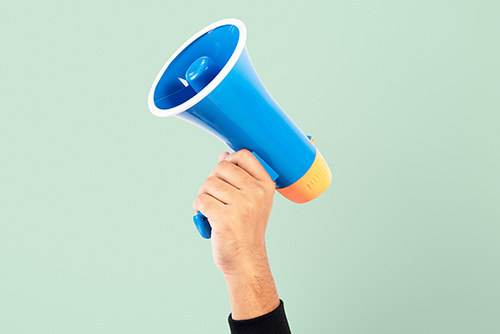
What Happens If You Don’t Pay Your Student Loans?
Many people turn to student loans to finance their higher education opportunities. But once you’ve taken out these loans, paying them off can be a difficult and stressful process. If you have student loans, you might feel like the unpaid balance constantly looms in the back of your mind, simultaneously causing you stress and accumulating interest!
You may have even asked yourself, “What happens if you stop repaying student loans?”
You’re not alone in this curiosity, and the prospect can certainly feel tempting. However, ignoring your student loans doesn’t make the problem go away. In fact, it can make your financial issues much worse. Read on to learn more about what happens when student loans aren’t paid and what you can do to help make repayment more manageable.
Note: To help borrowers successfully return to federal student loan repayment after the recent pause, the government created a temporary on-ramp period through Sept. 30, 2024. This prevents consequences of missed, late, or partial payments, including negative credit reporting for delinquent payments for twelve months. However, payments are still due, and interest will continue to accrue. Credit companies could still factor in missed or delinquent payments.
Student Loans are Persistent
According to 2023 research, the amount of total student loan debt currently owed between federal and private loans amounts to $1.75 trillion. The average individual borrower owes about $28,950.
These numbers are certainly nothing to scoff at. For an individual trying to find a successful start in life after finishing school, carrying this extra financial burden can be a heavy weight. The situation can be even more problematic for those who chose not to finish their studies and thus have accrued tremendous debt without a job-securing degree to show for it.
When money problems become too overwhelming, some people may file for bankruptcy to experience relief from their debts and get a fresh slate.
Unfortunately, the vast majority of student loans generally cannot be discharged during bankruptcy.
Even still, there are a couple of ‘outs’ that some people explore as potential solutions to their student debt problems:
- Student loan forgiveness programs – While there are student loan forgiveness programs available, these options are typically reserved for federal student loans only, and for certain professions such as public service workers and teachers. In 2022, President Biden announced a plan that would relieve student loan borrowers of up to $20,000 of their debt. However, the Supreme Court struck down the initiative.
- Rare circumstances – In some very uncommon cases, loans can be canceled entirely or discharged. This can occur when a school closes its operations or when the borrower suffers a permanent disability. However, it’s best to take action instead of hoping for an unlikely outcome like this.
Exploring the Effects of Nonpayment
The truth is, there’s no tried and true way to magically make your debt disappear—and simply ignoring your debt may only make matters worse. When you receive student loan funding, you agree to certain conditions for paying that money back. So, failing to meet those requirements will result in a variety of consequences.
Immediate repercussions can include:
- Increased interest rates on remaining balances
- Additional fees, including late fees
Long-term consequences of nonpayment may look like:
- Negative impacts on your credit score
- Loss of eligibility for federal programs
The bottom line is that engaging in nonpayment behavior is asking for trouble with the law. If you neglect your monetary responsibilities, you could face legal action such as:
- Wage garnishment, meaning your lender can take the money they are owed directly from your paycheck
- Tax refund withholding
- Lawsuits
Ultimately, when you avoid paying off your student loans, you create a snowball of a problem. The longer you let this snowball build up, the more destructive it will become later.
How to Avoid Student Loan Default
When you default on a student loan, you have failed to repay the money you owe in proper accordance with the terms of your lender. Private student loans often default after 90 days of missed payments. For the majority of federal student loans, failing to make a payment within a period of 270 days will result in your loan holder taking steps to place the loan in default and collect on it.
If you are already in default on federal student loans, you may be able to participate in Fresh Start – a one-time, temporary program that offers certain benefits for borrowers with defaulted loans.
If you’re worried this outcome might be on your horizon, it’s wise to take the necessary precautions to prevent it. The good news is that there are strategies you can use to experience temporary relief.
Deferment or Forbearance
By requesting loan deferment or loan forbearance, you can pause your federal student loan payments for a certain amount of time, giving you more wiggle room to recover and get back on track. Deferment means you can temporarily stop making payments. Forbearance means you won’t have to make a payment, or you can temporarily make a smaller payment for up to 12 months. However, the loans will still be waiting for you when deferment or forbearance end. You must contact your lender to request these benefits.
There are a variety of situations that can allow you to qualify for deferment or forbearance. These include, but are not limited to:
- Being enrolled in college or a vocational school
- Suffering economic hardship
- Actively serving in the military
- Experiencing a period of unemployment
- Undergoing treatment for cancer
When you opt for one of these two choices, you will receive temporary relief benefits, income-driven repayment options, and potentially even loan forgiveness.
Private Loan Relief Programs
The strategies mentioned above can be great for dealing with federal loans, but what about private lending?
Private student loans can sometimes be dealt with through relief programs or policies offered by lenders. To determine if you’re eligible, you’ll need to conduct some research and communicate with your specific lender—they’ll be able to guide you toward the best course of action for your unique situation. A credit union lender may offer more flexibility than other traditional lenders.
Student Loan Repayment Alternatives and Solutions
Income-Driven Repayment (IDR) Plans
IDR Plans have existed for federal student loans for quite some time, but recent changes have made it even easier to qualify for lower or even no monthly student loan payments on federal student loans. You must apply and be approved for these plans; learn more about the qualifications.
Student Loan Refinance
Refinancing is a popular loan repayment solution to make paying your balance more manageable. With this strategy, you can:
- Potentially lower your interest rate or monthly payment
- Combine multiple loans into a single payment
However, it’s important to keep in mind that opting to refinance can pose a few drawbacks, such as the loss of current and future federal benefits for student loans.
Get Your Student Loan Debt Under Control
If you’ve ever considered just stopping your student loan payments, you’re not alone. However, this strategy can have costly consequences. By following the tips in this article and taking proactive steps to manage your student loan debt effectively, you can get out from under your loans and find financial freedom.
Credit unions can be a valuable partner to help you conquer student loan debt. We can help match you with a credit union for your student loan refinance needs, or you can chat with our experts to learn more about your options.
*Federal student loans may qualify for payment and interest rate benefits that private student loans do not. Carefully consider your options before refinancing federal student loans, as they will no longer qualify for current and future federal benefits once refinanced with a private lender. For more information, visit studentaid.gov or contact your federal student loan servicer.






